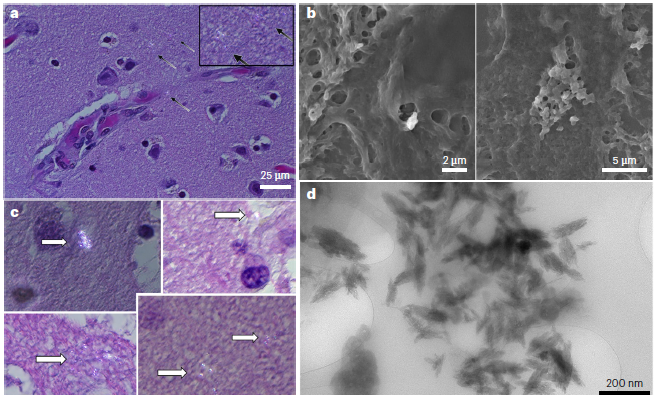A groundbreaking new study published in Nature Medicine has revealed the disturbing presence of microplastics and nanoplastics (MNPs) in human brain tissue, raising serious questions about the potential long-term health consequences of plastic pollution. Researchers from the University of New Mexico and collaborating institutions have found that these tiny plastic particles are not only accumulating in the brain but are doing so at an increasing rate, with a particularly high concentration observed in individuals with dementia.
This study marks a significant advancement in our understanding of how plastic pollution affects human health and highlights the urgent need for further research to assess the risks associated with MNP exposure.
What Did the Researchers Discover?
The research team analyzed brain, liver, and kidney samples from deceased individuals, some dating back to 2016 and others from 2024. Using sophisticated techniques like pyrolysis gas chromatography–mass spectrometry, attenuated total reflectance–Fourier transform infrared spectroscopy, and electron microscopy, they identified and quantified the types and amounts of MNPs present in these tissues.
Key findings include:
- MNPs Found in All Organs: Microplastics and nanoplastics were detected in all the analyzed organs, including the brain, liver, and kidneys.
- Brain Accumulation: Brain tissue showed significantly higher concentrations of MNPs compared to the liver and kidneys. The primary type of plastic found in the brain was polyethylene, the most common plastic used in packaging and various consumer products.
- Increasing Concentrations Over Time: The levels of MNPs in both the liver and brain samples increased significantly between 2016 and 2024, indicating a growing exposure to plastic pollution over time.
- Elevated Levels in Dementia Patients: Brain samples from individuals with diagnosed dementia showed dramatically higher MNP concentrations than those from individuals without dementia. The plastics were notably deposited in cerebrovascular walls and immune cells within the brain.
Why is This Study Important?
This study is particularly alarming because it demonstrates that microplastics can cross the blood-brain barrier, a protective mechanism that shields the brain from harmful substances. The presence of MNPs in the brain raises concerns about potential neurotoxic effects, inflammation, and disruption of normal brain function.
Here’s why this research is so relevant:
- Ubiquitous Plastic Pollution: Microplastics are everywhere – in our air, water, food, and even the products we use daily. This study confirms that we are not only exposed to these particles but also that they are accumulating inside our bodies, specifically in critical organs like the brain.
- Potential Link to Neurological Disorders: The finding that individuals with dementia have significantly higher levels of MNPs in their brains suggests a potential link between plastic exposure and neurodegenerative diseases. While this study does not prove causation, it raises important questions about the role of MNPs in the development or progression of dementia.
- Understanding Exposure Pathways: The study emphasizes the need to understand how MNPs enter the body, how they are transported to different organs, and how they are cleared (or not cleared) from the system. Understanding these pathways is crucial for developing strategies to reduce exposure and mitigate potential health risks.
- Informing Public Health Policies: The results of this study can inform public health policies aimed at reducing plastic pollution and promoting safer alternatives. This includes measures to reduce single-use plastics, improve waste management, and develop biodegradable materials.
What Are the Implications of These Findings?
While this study provides valuable insights, it also raises several important questions:
- Causation vs. Correlation: Does MNP exposure directly cause or contribute to dementia, or is it simply a correlation? Further research is needed to determine the causal relationship between MNPs and neurodegenerative diseases.
- Mechanism of Action: How do MNPs affect brain cells and function? What are the specific molecular mechanisms by which these particles may contribute to inflammation, cell damage, or other adverse effects?
- Sources of Exposure: What are the primary sources of MNP exposure? Is it through ingestion of contaminated food and water, inhalation of airborne particles, or other routes?
- Individual Susceptibility: Are certain individuals more susceptible to the harmful effects of MNPs due to genetic factors, pre-existing health conditions, or lifestyle choices?
A Wake-Up Call
The discovery of microplastics in human brains is a concerning development that highlights the pervasive nature of plastic pollution and its potential impact on human health. While much more research is needed to fully understand the risks, this study serves as a crucial reminder of the urgent need to address plastic pollution and protect our health and environment from the harmful effects of these “forever chemicals.”
This research is not just about science; it’s about our future. It’s a call to action for individuals, industries, and governments to work together to reduce plastic consumption, improve waste management, and create a world where the next generation doesn’t have to worry about the accumulation of plastic in their brains.







